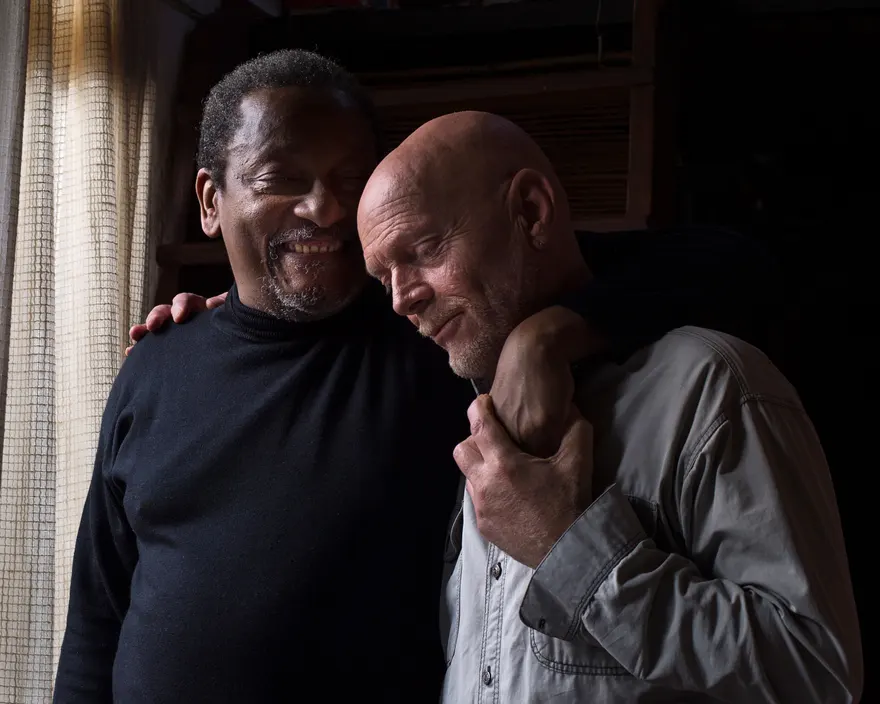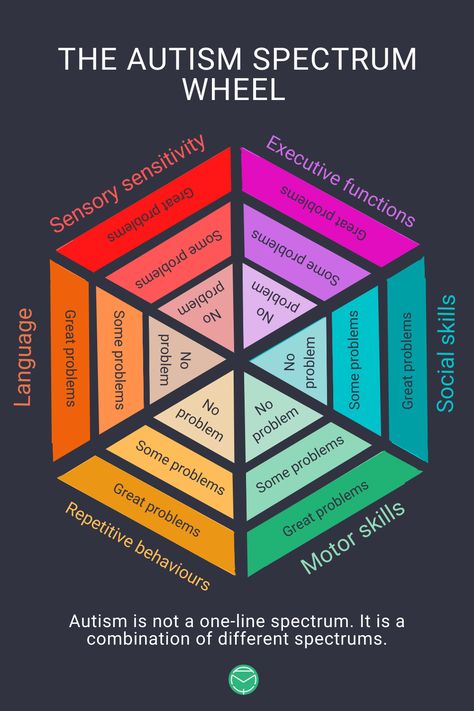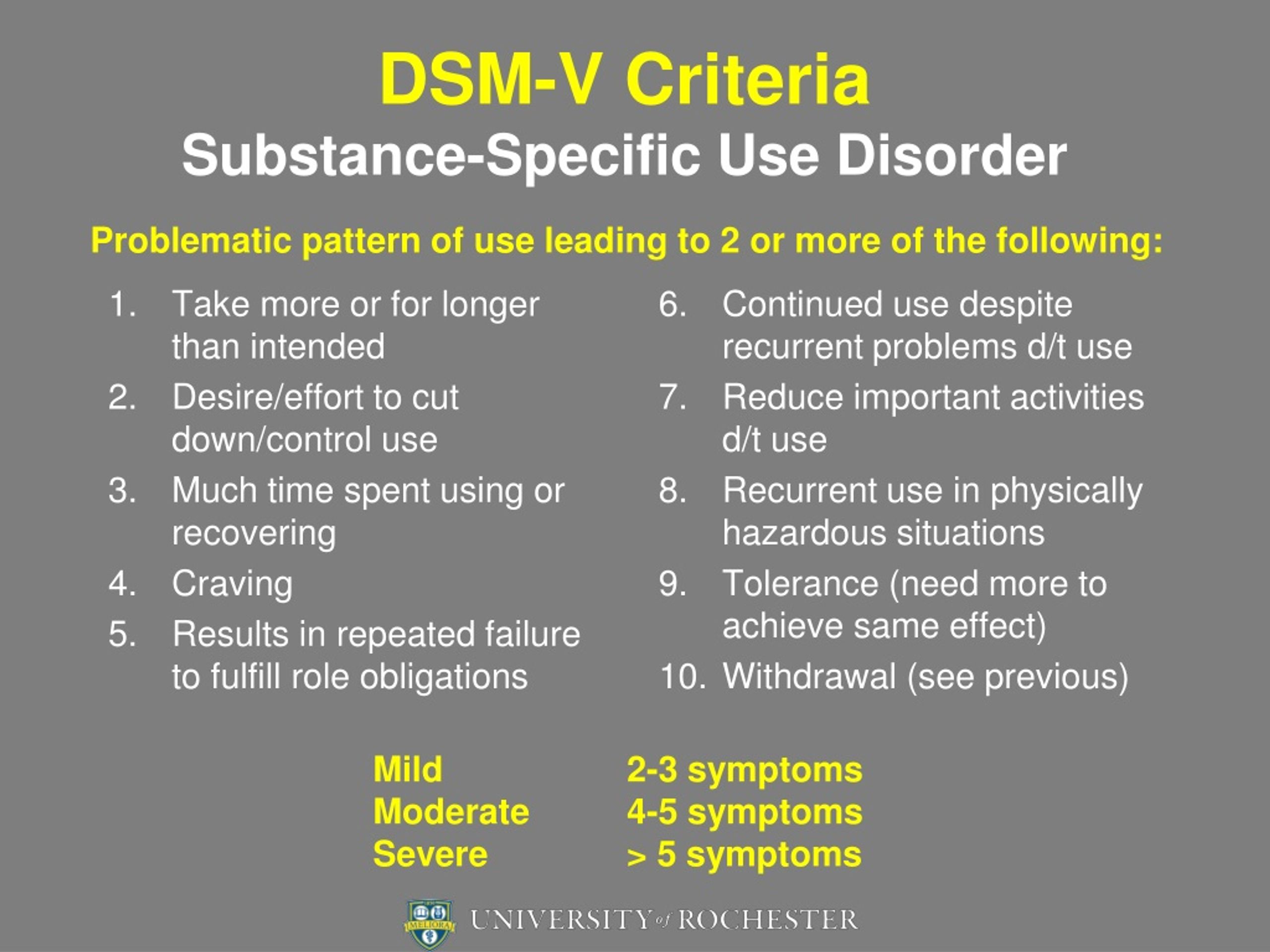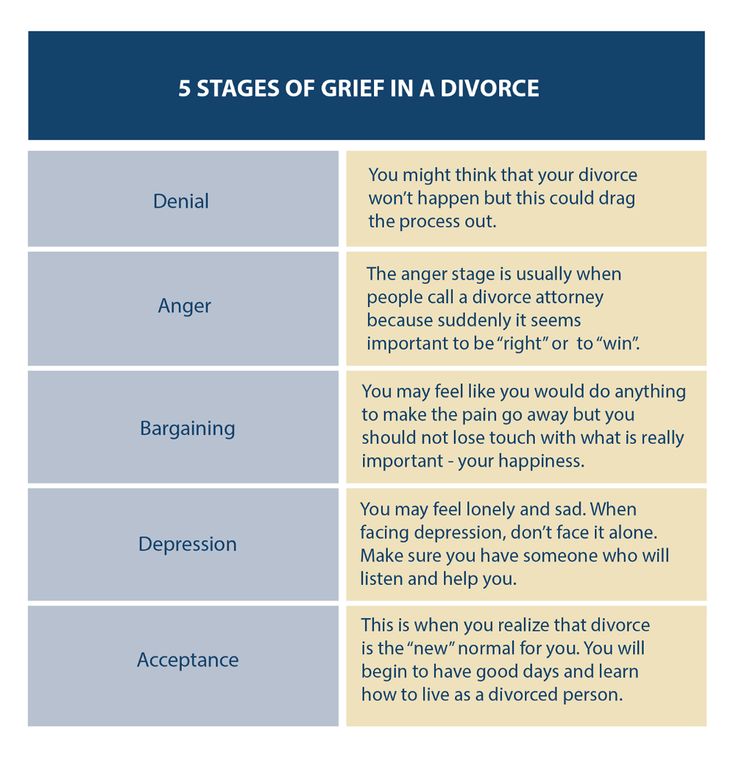Coming out older
The Joys (and Unique Challenges) of Coming Out as an Older Adult – SAGE
And why it’s never too late to explore your own sexuality.
In the mid-80s, Loren Olson was living out the idyllic vision of suburban peace. He had been married for 18 years, had two wonderful children, and was a successful psychiatrist practicing in Des Moines, Iowa.
“I had everything I thought I wanted,” Olson says. But he couldn’t shake a deep sense of loneliness. “I knew there was something wrong, but I couldn’t figure out what it was.”
Olson, who’s now 79, says that at the time he had never seriously considered the possibility that he could be attracted to men. He was raised in rural Nebraska and throughout his adolescence didn’t know anyone who was openly gay. But as he began to feel more isolated, he eventually strayed from his marriage and began an affair with a man. And all at once, he says, it was like he finally understood romantic love.
“I experienced an intensity of feelings that I had never before had at any time in my life. It felt like the thing everybody had talked about, what I should have had, and expected to have, with my wife,” he tells us.
Olson, who wrote about his experience in his memoir Finally Out, had finally come to see himself as a gay man at 43.
Coming out, or simply exploring your sexuality in new ways, later in life is no small feat. It can involve completely reorienting your sense of identity, relearning how to date and enjoy physical intimacy in new ways, and possibly confronting discrimination. Joanne Fleisher, a Philadelphia-based therapist who had spent decades counseling gay women who were looking to leave their marriages after coming out herself, says the process for her was the most turbulent period of her life.
“There’s a lot of emotional turmoil and you can feel very uncentered and unmoored in many respects, and for a period it can feel like you’ll never regain that. But I think once a clear decision is made about what they want to do, they begin to feel themselves coming back together again,” and are able to have more fulfilling relationships, Fleisher says.
For Baby Boomers, embracing a new sexual orientation can be especially difficult. That generation came of age during a time when we, as a society, were not nearly as accepting of the LGBTQ community, and they lived through the brutal prejudice that marked the AIDS epidemic, says Eric Marlowe Garrison, a sex counselor who works with queer seniors. “This was decades before there was a same-sex kiss in a kids’ movie,” he says, referring to the scene in Lightyear, the new Toy Story spinoff.
As a result, internalized homophobia was, and to a lesser extent still is, fairly common. Fleisher says the reason so many of her clients didn’t come out earlier was “because they couldn’t deal with facing it in themselves.” That strain has been shown to lead to depression and anxiety in queer adults.
Part of Fleisher’s own struggle with embracing her sexuality was that for a long time she felt she was operating in what was essentially a “straight world.” There were few, if any, positive representations of gay relationships in popular media and she knew very few out lesbians, giving her little reason to question that she could be anything other than heterosexual. “I just lived my life according to what I thought was expected of me. I dated boys in high school and didn’t even think that women were an option,” says Fleisher, who was married to a man for 12 years before coming out.
“I just lived my life according to what I thought was expected of me. I dated boys in high school and didn’t even think that women were an option,” says Fleisher, who was married to a man for 12 years before coming out.
Many, particularly those who come from religious backgrounds, still fear discrimination, says Marie Spivey, who volunteers with SAGE, a nonprofit in New York City that supports LGBTQ seniors. “A lot of people will still feel that they’re sinning,” she says. “They still have not been able to separate what they desire and what they need romantically from their upbringing.”
Plenty of people also just come to discover new aspects of their identity or sexuality at different points of life. “Often I think people believe that we reach our sexual identity as an adolescent, but that’s just not always the case,” Fleisher says.
Middle age can also be an especially fruitful period of self-discovery, Olson says. “I think a lot of people, when they reach that point in their life, begin to ask themselves, ‘Do I want to live the rest of my life the way I’ve lived the first part of my life?’ We begin to sort through our values and think about if we need to make some big changes,” he says.
When Olson divorced his wife and began dating, it felt a little like being thrown into the deep end, he says. “I had this fear that I didn’t know the rules, and I didn’t know how to approach anyone,” Olson says.
Like any new experience, Garrison says there’s going to be a learning curve and feeling intimidated by that is completely natural. It might mean having to learn a new vocabulary and grasping to navigate a dating scene that feels completely foreign. “There may be little codes, clues, cultural references that they’ve just missed out on because that person was in another realm before,” Garrison says.
They might also need to get up to speed on new dimensions and dynamics of physical intimacy, Spivey says. She runs group sessions with LGBTQ+ seniors, where she often has to teach the fundamentals of safe sex and consent, as well as what’s considered appropriate in certain situations. “Mostly what we do is share our experiences, listen to each other, and try to learn from each other,” she says.
Garrison has found that after many of his clients confront their fear around experimentation and work through it, they feel exhilarated to enter a new chapter of their lives. “It’s like the first time someone parachutes out of a plane. There’s the fear piece, obviously, but the free-fall can be invigorating and liberating,” he tells KCM.
If you’re questioning your sexualtiy or feel an urge to experiment, Fleisher recommends really taking your time coming to that decision. You want to be fully comfortable with how a life change like coming out impacts you and those you care about, and you should give yourself ample space for self reflection, she says.
When you feel ready to get out there, Garrison suggests finding an affinity group that also caters to people of your sexual orientation. “If you like camping, find a lesbian camping group, if you’re a gay Republican, join the Log Cabin Republicans. This way you’ll find people who are attracted to the same sex, but more importantly have at least one hobby in common with you,” Garrison says.
Above all, don’t lead with fear. Feeling apprehensive about sexual exploration is completely understandable given how long our culture has demonized the LGBTQ community, but it should not guide you through life, Garrison says.
“Instead of thinking, ‘I’m afraid of being rejected,’ change your perspective. Think about how great it would be to find people who are going to celebrate this as much as I do,” he says.
This article originally appeared in Katie Couric Media on June 24, 2022.
Coming Out Later in Life: A How-To Guide
Coming out isn’t like flicking a switch or moving to a new city. For many LGBTQ people, coming out can be an evolving process of being honest with yourself, then a confidant, then family members and classmates or co-workers—if you’re comfortable and ready to do so. Recently, a number of surveys report that queer people are coming out at younger ages than ever before as they benefit from growing (though not widespread) acceptance and better LGBTQ representation in the media. The landmark mainstream 2018 rom-com Love, Simon made strides in showing a closeted gay high schooler coming out to friends and family and getting a boyfriend.
The landmark mainstream 2018 rom-com Love, Simon made strides in showing a closeted gay high schooler coming out to friends and family and getting a boyfriend.
But even benchmarks like that don't mean all queer people feel ready to embrace their sexuality by the time they leave home. "Coming out is an intimate and personal decision, and everyone deserves the opportunity to come out safely on their own time," says Mathew Lasky, GLAAD’s Director of Communications. "Whether you come out at 16 or 60, there is validity in your experience and bravery in sharing your truth with the world."
Netflix's moving new documentary, A Secret Love, chronicles a lesbian couple (Pat Henschel and Terry Donahue) who didn’t come out to family members until they reached their eighties. And over the past few years, several prominent older celebrities have come out, too. Singer-songwriter Barry Manilow was 73 when he first spoke publicly about being gay; Oscar-winning actor Joel Grey did so at 82.
But coming out is still generally presented as a rite-of-passage for teens and twenty-somethings. A Secret Love features its lesbian couple coming out to family members after more than 60 years together, something that should challenge what has long been a reductive narrative that’s potentially unhelpful for people who don’t fit that mold. Only by discussing why some queer people take longer to embrace their sexuality can we help other late-bloomers to do the same.
Neil Baer, executive producer and show runner on the Netflix series Designated Survivor, came out as gay in his fifties because he was feeling “increasing anxiety about living a double life.” He’d gotten into a pattern of having sex with men “on the down low,” then “justifying my behavior by telling myself I wasn’t unfaithful to my wife because I wasn’t having sex with women.” Though Baer had moved in relatively tolerant circles during adulthood (he studied at Harvard Medical School in the early ‘90s before becoming a staff writer on ER), his early years in a “fairly conservative community” in Denver were tough to shake off. “No kids were out then and to be thought of as queer was, I felt, the worst thing that could happen to me,” he recalls. “Fortunately, I’ve managed to get past that.”
“No kids were out then and to be thought of as queer was, I felt, the worst thing that could happen to me,” he recalls. “Fortunately, I’ve managed to get past that.”
In fact, Baer says that since coming out, “I feel free to love openly and honestly, and no one cares who I’m doing that with.” He describes himself as "still me, just presenting a clearer version to the world," and remains on such good terms with his ex-wife that they're currently self-isolating together. He also insists he has no regrets about coming out later. "If I could have done it years, months, days, or even minutes earlier, I imagine I would have," he says. "But I can’t change the past—I can only live as myself now and in the future.”
When a woman chooses a man much older: what does it mean?
203,907
Man and woman Know thyself
Everyone remembers from school days that girls develop faster than boys physiologically and, as a result, psychologically. While classmates awkwardly pull their pigtails and defiantly communicate only with each other, a good half of the girls are drowning in romantic dreams about Seryozha from 11 "A".
While classmates awkwardly pull their pigtails and defiantly communicate only with each other, a good half of the girls are drowning in romantic dreams about Seryozha from 11 "A".
This trend persists until about 23-25 years old: peers are not very interesting, and girls choose older men. However, when the age difference is 10, 15, or even 20 years, the reason lies not only in physiology. nine0003
According to Freud
Sigmund Freud also wrote that parents become the prototypes of the partners we choose. Boys fall in love with girls who look like their mother, girls fall in love with men who look like their father.
Many women instinctively look for older men because they did not receive father's love, care and attention in childhood. There are many options, but perhaps they were not told in childhood: “I love you” or “You are my princess.” Or maybe the woman grew up in an incomplete family, where for some reason there was no father. nine0003
Another sad story, when the father was physically present, but emotionally he was not. A prime example is alcoholism. You cannot rely on such a father and get support. At the moment when he is most needed, he goes on a binge. And the girl is desperately looking for love, understanding and care from others and most often does not find it.
A prime example is alcoholism. You cannot rely on such a father and get support. At the moment when he is most needed, he goes on a binge. And the girl is desperately looking for love, understanding and care from others and most often does not find it.
Fear of separation from parents
When a woman has not achieved full autonomy from her parents, she seeks to return to this relationship. She is afraid to lose the parent-child connection forever. It is cozy in the parental nest and I want the man nearby to become a senior comrade or guardian who will provide financially and help morally. Such a woman cannot (and more often does not want to) solve financial issues on her own and feels uncomfortable without support. She is very afraid of being alone. nine0003
Family scripts
Children are unconsciously passed on generic life scripts that are reproduced from generation to generation. A striking example is when all women in the family are unlucky with their husbands: they drink, beat or gamble, but their hands are “golden”. And women endure, raise children and pass this script on to their daughters.
And women endure, raise children and pass this script on to their daughters.
In such cases, they say that it is “written by birth”. And if “it is written in the family” for a man in a couple to be older than a woman, he, obviously, will die earlier. And the woman will need to cope with this situation, survive it psychologically. nine0003
Inequality
A man chooses a woman younger than himself also for a reason.
These relationships are often based on inequality, since parent and child are, by definition, unequal. The reverse side of security and comfort is the dominance of a man, in which a woman has to sacrifice her own "I", push it into the background.
A man can consider a woman as a material from which he molds an ideal partner. He can be annoying with constant instructions and moralizing. Considering himself more experienced and wise, he will single-handedly make important decisions for both. nine0003
It is very difficult to get along with such a person. Especially if he is jealous of his young and attractive wife, while he is rapidly aging. Then the desire to limit the communication of the partner with the same age will be added to the moralizing.
Especially if he is jealous of his young and attractive wife, while he is rapidly aging. Then the desire to limit the communication of the partner with the same age will be added to the moralizing.
Benefit
At the same time, a mature man is a reliable rear behind which a woman feels good for many reasons:
- Material benefit. A financially accomplished man is a reliable support for a family, in which a woman can take care of the house, hobbies and raising children without needing anything. nine0046
- Interesting personality. An adult man is a person who has seen and knows a lot. Of course, it is more interesting with him than with a peer who has not yet decided who he is and what interests him.
- Emotional support and care. With age, men begin to understand women a little, or at least pretend to. They know how to listen and support in difficult times, which can be difficult for young couples.
- Reliability.
 A mature man has already "worked up", he knows what he wants. It is not scary to create a family with him, you can rely on him. nine0046
A mature man has already "worked up", he knows what he wants. It is not scary to create a family with him, you can rely on him. nine0046 - Sexual life. Experienced knows how, how much and what a woman wants, and is not obsessed with her sexual success.
Pitfalls
- Different values and interests. Partners listened to different music in their youth, read different books, watched different films. On the one hand, this can be a problem, on the other hand, on the contrary, it increases interest in each other.
- Unflattering comparison with previous wives and partners. There is a risk of getting taunts about culinary abilities, habits, skills. The main thing here is to gently but firmly make it clear that you are you. What he was used to was left in the past, with which he himself decided to part. nine0046
- Reluctance to have children. He has children from previous marriages and wants no more. He, as they say, "ate" and wants to live for his own pleasure, while the young woman is ripe for the family.

- Disharmony in activity. An ideal weekend for a man is at home on the couch, and his partner misses skiing. Here it is important to negotiate, find compromises and spend leisure time both together and separately from each other. For example, one weekend you stay at home, the second you spend in nature, the third - the husband lies on the couch, and the wife goes skiing with her friend. nine0046
The chances of a long-term relationship
If the parent-child relationship suits both, the chances of the couple staying together are high. What is important is not the age difference as such, but how old each of the partners is. With age, we better understand who we need, learn to build relationships, discuss problems, instead of slamming the door, and try to be more condescending to each other's shortcomings. It all depends on the emotional maturity of each of the partners and the desire to be together, despite the differences. nine0003
About the author
Olga Kuznetsova is a psychologist, author of the Zygmund Trend channel.
Photo Source: Getty Images
New on the site
14 ideas for spending time with family during the New Year holidays and then offered to remain friends"
"Sometimes I feel like I hate my daughter"
"Golden Rule": 8 tips to improve relationships - try it with a partner
What to do if your mother interferes with your life: an interview with a psychotherapist
Parents and children: the dangerous consequences of secret envy
“Is it worth marrying a person suffering from “intellectual racism”?”
Congenital hip dislocation
Congenital hip dislocation is a severe birth defect. This disease occurs in girls 5-10 times more often than in boys. Bilateral lesion occurs 1.5–2 times less often than unilateral.
Numerous modern studies have shown that congenital hip dislocation is based on dysplasia (ie, a violation of the normal development of the elements of the hip joint) during fetal development. These primary disorders cause secondary ones - underdevelopment of the pelvic bones, complete separation of the articular surfaces, the femoral head leaves the articular cavity and goes to the side and up, slowing down the ossification (ossification) of the bone elements of the joint, etc.
Hip dysplasia occurs in three variants:
1. Hip dysplasia in the form of an irregular shape of the articular cavity, head and neck of the femur, without disturbing the ratio of articular surfaces.
2. Congenital subluxation of the femoral head, when, along with the irregular shape of the articular cavity, head and neck of the femur, but here the ratio of the articular surfaces is already violated, the femoral head is displaced outward and may be located on the very edge of the joint. nine0003
3. Congenital hip dislocation is the most severe form of hip dysplasia. With it, in addition to the irregular shape of the elements of the joint, there is a complete separation of the articular surfaces, the femoral head comes out of the articular cavity and goes to the side and up.
Causes
Unfavorable ecological situation in the place of permanent residence or work of the mother. nine0003
Clinic for congenital preluxation, subluxation and dislocation of the hip in children
After the birth of a child, hip dysplasia can be detected during an orthopedic examination in the maternity hospital or in the clinic immediately after the birth of the child, according to the main symptoms:
- Restriction of abduction of one or both thighs of the child.
 This symptom is defined as follows: the child's legs are bent at a right angle in the hip and knee joints and spread apart to the stop. Normal hip abduction angle is 160-180°. With hip dysplasia, it decreases. nine0046
This symptom is defined as follows: the child's legs are bent at a right angle in the hip and knee joints and spread apart to the stop. Normal hip abduction angle is 160-180°. With hip dysplasia, it decreases. nine0046 - Marx's symptom - Ortolani or "click" symptom. This symptom can be determined in a child only up to 3 months, then it disappears. It is determined as follows: the child's legs are bent at a right angle at the knee and hip joints, then they are brought to the midline and slowly parted to the sides, while a click is heard from the side of the dislocation, at which the child's leg shudders, sometimes it is heard at a distance.
- Shortening of the child's leg - it is determined in this way: the child's legs are bent at the knee and hip joints and pressed against the stomach symmetrically and the shortening of the corresponding hip is determined by the level of the knee joint. nine0046
- The asymmetry of the skin folds is determined in a child with straightened legs in front and behind.
 In front of a healthy child, the groove folds should be symmetrical; in the back, the gluteal and popliteal folds are also symmetrical. Their asymmetry is a symptom of hip dysplasia. This symptom is intermittent and of secondary importance.
In front of a healthy child, the groove folds should be symmetrical; in the back, the gluteal and popliteal folds are also symmetrical. Their asymmetry is a symptom of hip dysplasia. This symptom is intermittent and of secondary importance.
In children over one year old, there are additional symptoms of this disease, such as gait disturbance, Duchenne-Trendelenburg symptom (symptom of insufficiency of the gluteal muscles), high standing of the greater trochanter (above the Roser-Nelaton line), a symptom of a non-disappearing pulse. nine0003
Ultrasound diagnostics and radiography of the hip joint are of decisive importance in the diagnosis.
If you find these symptoms in your child, you should immediately contact a pediatric orthopedist. Diagnosis and treatment of children with predislocation, subluxation and dislocation of the hip should be carried out in the first 3 months of life, later dates are considered to be belated.
Complications of congenital hip dislocation
A child with congenital hip dislocation often starts walking late. These children have trouble walking. The child limps on the leg on the affected side, his torso leans in the same direction. This leads to the development of curvature of the spine - scoliosis. nine0003
These children have trouble walking. The child limps on the leg on the affected side, his torso leans in the same direction. This leads to the development of curvature of the spine - scoliosis. nine0003
With bilateral dislocation of the hip, the child has a "duck" gait. But children do not complain about pain in the joints.
Untreated hip dysplasia in children can lead to the development of dysplastic coxarthrosis (outward displacement of the femoral head, flattening of the articular surfaces and narrowing of the joint space, osteophytes along the edges of the acetabulum, osteosclerosis, multiple cystic formations in the outer part of the roof of the acetabulum and head femur) in adults. Treatment of this pathology in adults is very often possible only by performing joint replacement surgery, i.e. replacement of a diseased joint with a metal one. nine0003
Treatment
There are two main methods of treating this pathology: conservative and operative (ie surgical). If the diagnosis is made in time and correctly, then conservative methods of treatment are applied. In this case, the child is individually selected splint, which allows you to keep the child's legs in the position of flexion in the hip and knee joints at a right angle and abduction in the hip joints, which contributes to their proper development and formation. nine0003
If the diagnosis is made in time and correctly, then conservative methods of treatment are applied. In this case, the child is individually selected splint, which allows you to keep the child's legs in the position of flexion in the hip and knee joints at a right angle and abduction in the hip joints, which contributes to their proper development and formation. nine0003
Repositioning of the femoral head should be slow, gradual and atraumatic. Any violence is unacceptable, as it easily damages the head of the femur and other tissues of the joint.
Conservative treatment of children with congenital preluxation, subluxation and dislocation of the hip is the leading method. The earlier it is possible to achieve a comparison of the acetabulum and the femoral head, the better conditions are created for the correct further development of the hip joint. The ideal time to start treatment should be considered the first days of a child's life, that is, when the secondary changes in the cavity and the proximal end of the femur are minimal.














